Graphs
- All types of trees are special cases of graphs
- a collection of nodes or values called
verticesthat might be related- relations between vertices are called
edges G = (V, E)
- relations between vertices are called
- many things in life can be represented by graphs
- e.g. a social network can be represented by a graph whose vertices are users and whose edges are friendships between the users
- similarly, a city map can be represented by a graph whose vertices are locations in the city and whose edges are roads between the locations
- typically, we represent a graph as an
adjacency list|V|- it can store a list of nodes in the graph
- every node stores value and a list of it's edges (or a list of it's adjacencies)
- a graph can also be represented by a 2 dimensional array
Graph cycle
- a cycle occurs in a graph when 3 or more vertices in the graph are connected so as to form a closed loop
- note that the definition of a graph cycle is sometimes broadened to include cycles of length 2 or 1
- in the context of coding interviews, when dealing with questions that involve graph cycles
- it's important to clarify what exactly constitutes a cycle
- in the context of coding interviews, when dealing with questions that involve graph cycles
Acyclic Graph
- a graph that has no cycles
Cyclic Graph
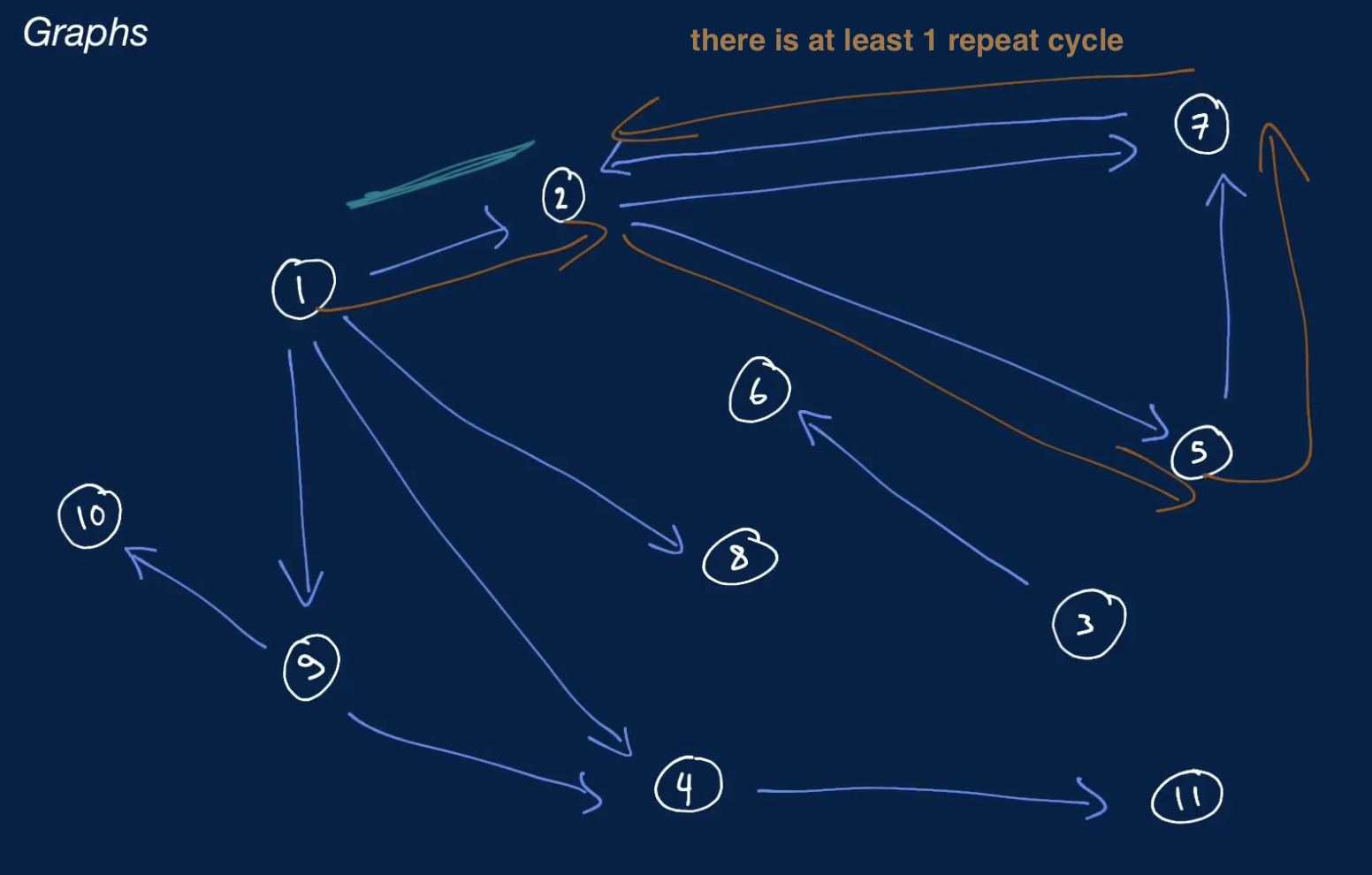
- a graph that has at least 1 cycle
- if you are traversing through the graph, and going down connections, and found yourself revisiting a connection that you have previously visited just by following the path of 3 edges
- then that means there's a cycle in the graph
Directed Graph
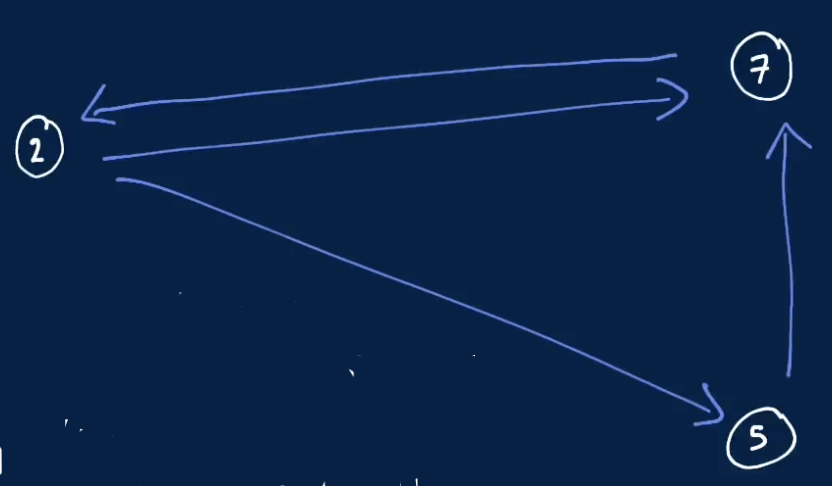
- a graph that whose edges are directed
- meaning that they can only be traversed in 1 direction, which is specified
- for e.g. a graph of airports and flights would likely be directed
- since a flight specifically goes from 1 airport to another (has a direction)
- without necessarily implying the presence of a flight in the opposite direction
- since a flight specifically goes from 1 airport to another (has a direction)
Directed Graph with Weights
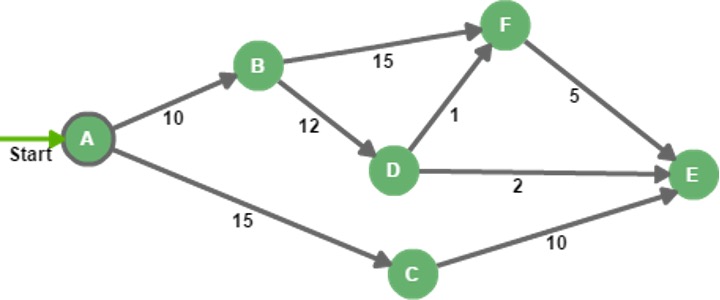
Undirected Graph
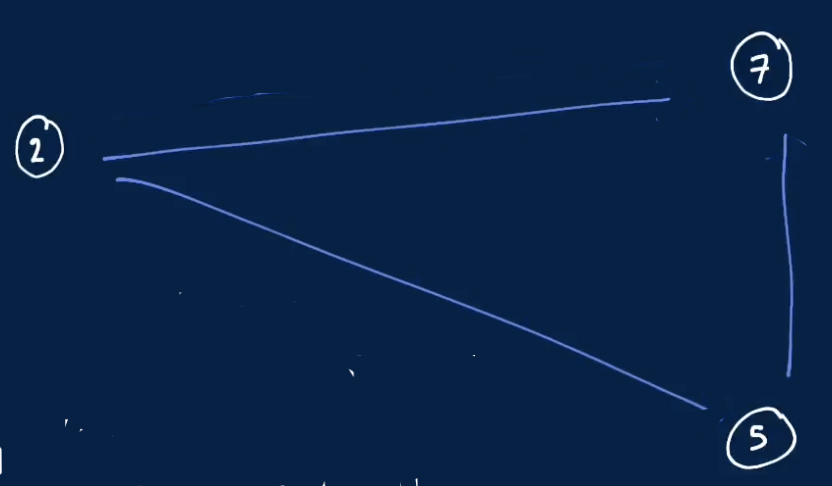
- a graph whose edges are undirected, meaning that they can be traversed in both directions
- e.g. a graph of friends would likely be undirected, since friendship is by nature bidirectional
Connected Graph
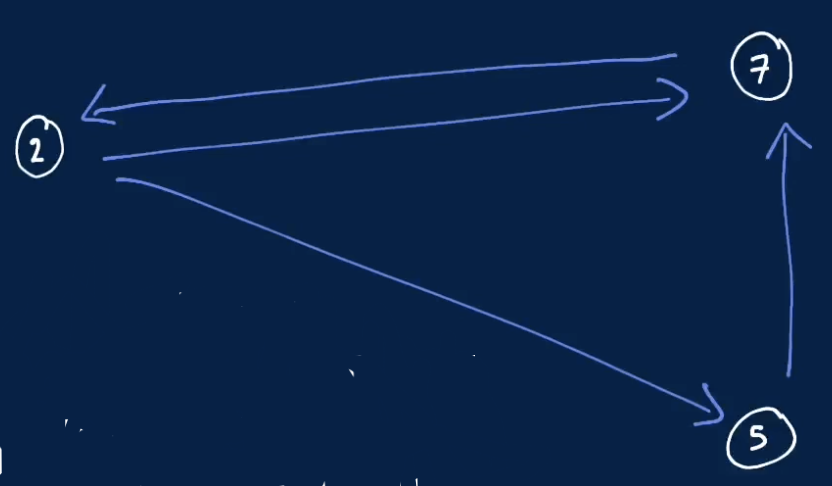
- a graph is connected if for every pair of vertices in the graph there's a path of 1 or more edges connecting the given vertices
- in the case of a directed graph, the graph is
- strongly connected if there are bidirectional connections between the vertices of every pair of vertices
- for every vertex-pair (u, v), can reach v from u and u from v
- weakly connected if there are connections (but not necessarily bidirectional ones) between the vertices of every pair of vertices
- strongly connected if there are bidirectional connections between the vertices of every pair of vertices
Disconnected Graph
- a graph that isn't connected is said to be disconnected
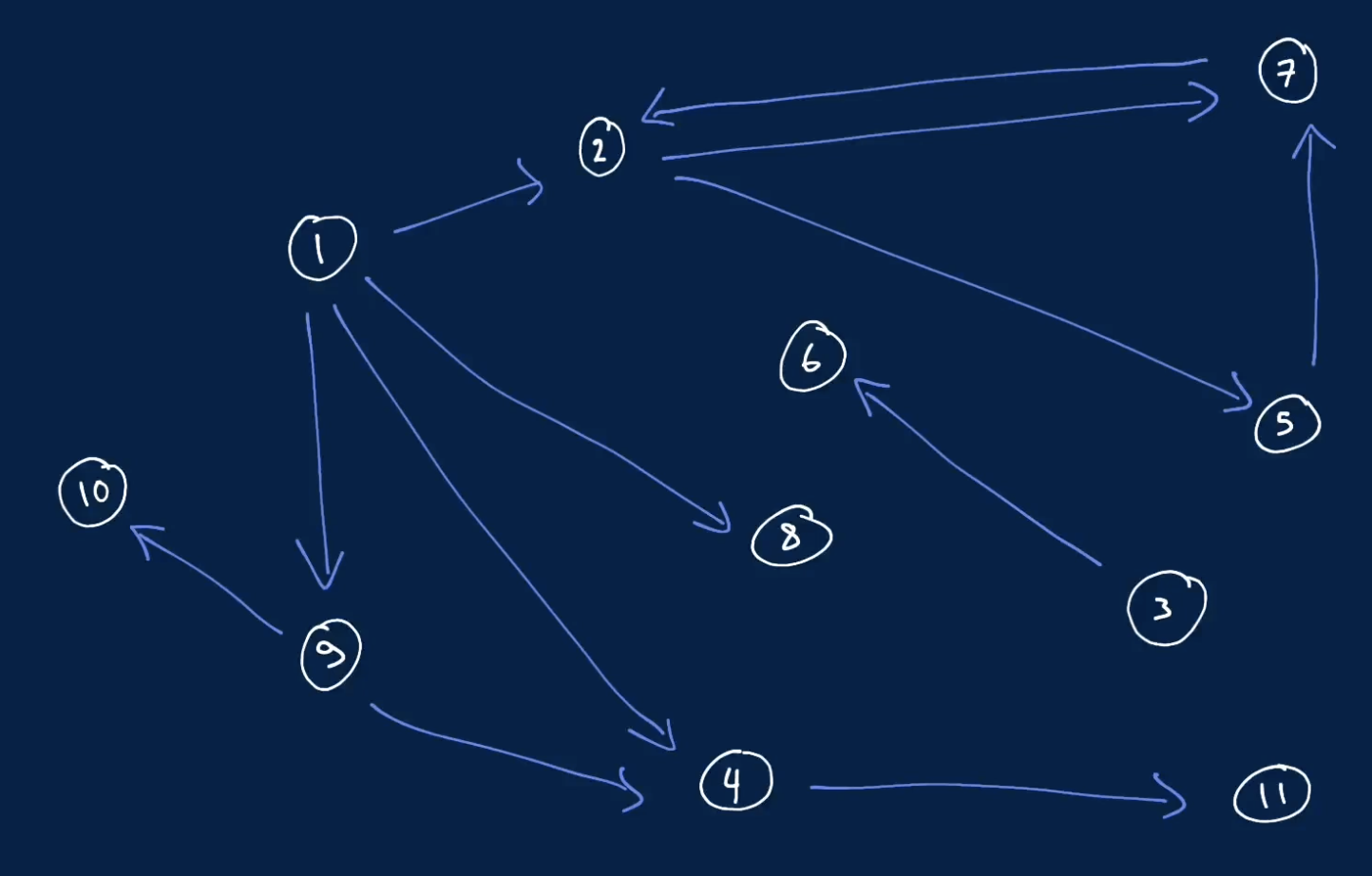
standard operations and complexities
Storing a graph: O(V + E) space
- storing V vertices (nodes)
- V is the number of vertices in the graph
- storing E edges
- E is the number of edges in the graph
Traversing a graph: O(V + E) time
Depth First Search (DFS)
- traversing the graph deeper before going wide
Breath First Search (BFS)
traversing the graph wider before going deep
it is one of the simplest algorithms for searching a graph and the archetype for many important graph algorithms
The algorithm works on both directed and undirected graphs
example: assumes that the input graph
G = (V, E)is represented using adjacency listsfunction BFS(Graph, source) {
let u, vertex;
for (u of Graph) {
u.color = "WHITE";
u.dist = Number.POSITIVE_INFINITY;
u.parent = null;
}
source.color = "GRAY";
source.dist = 0;
source.parent = null;
Queue = [];
Queue.push(source);
while (Queue.length > 0) {
u = Queue.unshift();
for (vertex of Graph.Adj[u]) {
if (vertex.color === "WHITE") {
vertex.color = "GRAY";
vertex.dist = u.dist + 1;
vertex.parent = u;
Queue.push(Queue, vertex);
}
}
u.color = "BLACK";
}
}